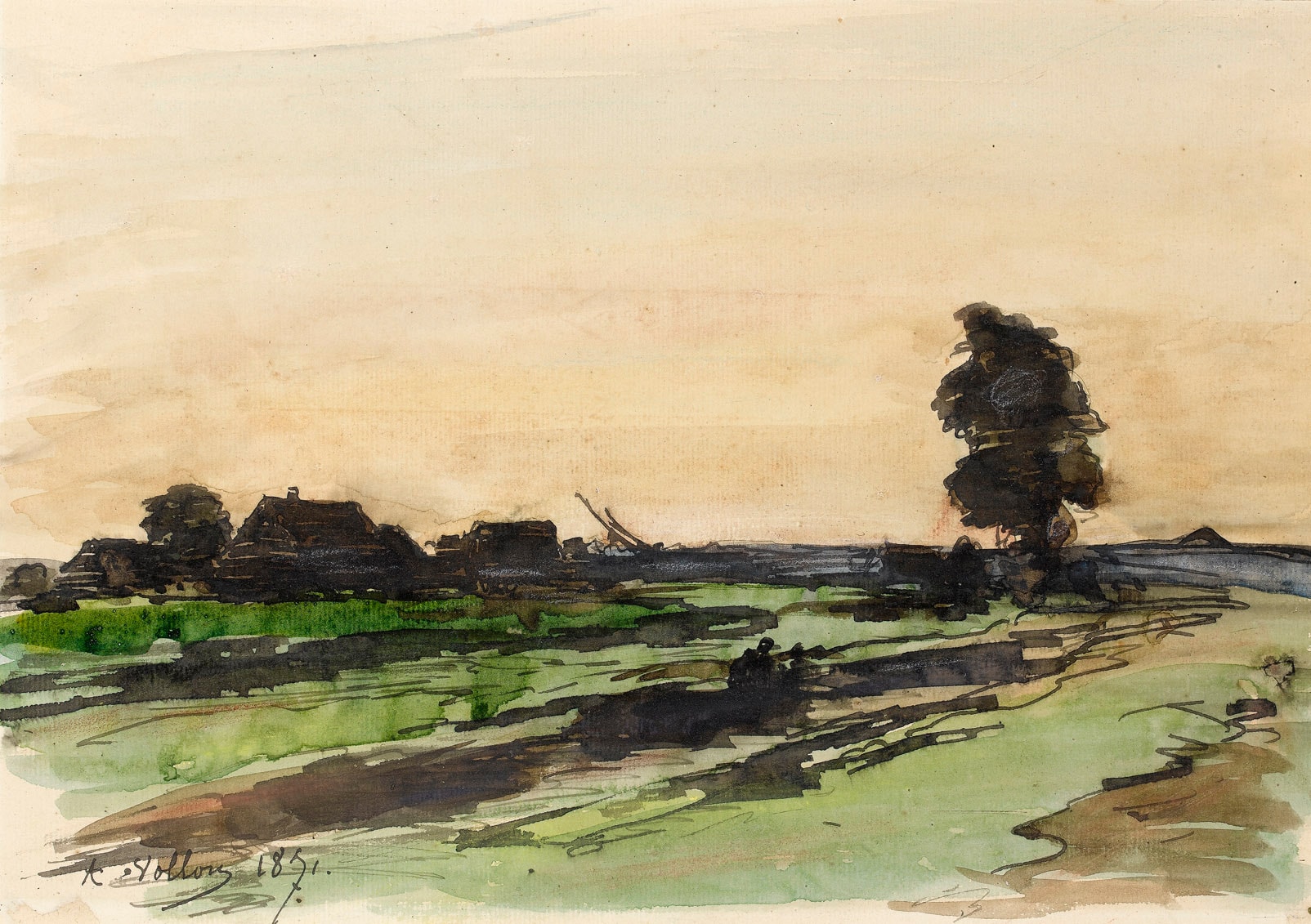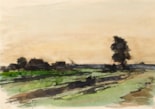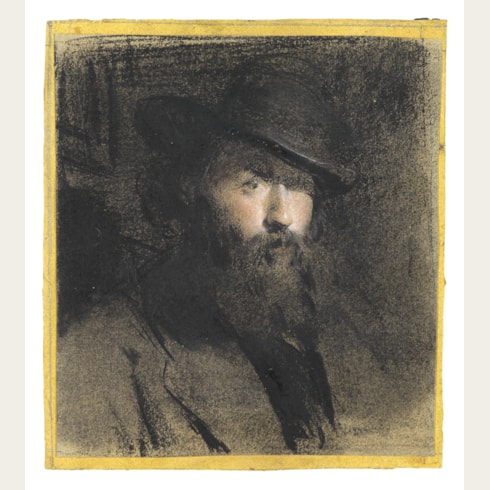Antoine VOLLON
(Lyon 1833 - Paris 1900)
Landscape at Twilight
Sold
Watercolour, pen and grey ink and grey wash.
Signed and dated A. Vollon 1871 at the lower left.
247 x 329 mm. (9 3/4 x 12 7/8 in.)
Signed and dated A. Vollon 1871 at the lower left.
247 x 329 mm. (9 3/4 x 12 7/8 in.)
While best known for his still life paintings, Vollon was also a superb landscape painter, although he chose not to exhibit any of his landscapes at the Salon until quite late in his career. In the words of one modern scholar, ‘Vollon was drawn to landscape because of his profound intuitive affinities with the genre. It was, quite simply, what he most loved to paint.’ Characterized by spirited brushwork and vigorous, sketch-like technique, Vollon created landscapes that are often quite close in mood and effect to those of his contemporaries among the Impressionists. The same can be said for his landscape drawings in watercolour, of which the present sheet is a particularly fine and fresh example. As Gabriel Weisberg has written, ‘Known to many only as a painter, Vollon was just as talented a draftsman…especially of landscapes in which he managed to catch the essence of a scene with a minimum of effort.’
Edmond Renoir, who organized the exhibition of Vollon’s work at La Vie Moderne in 1879, noted of the artist’s watercolour drawings that they were ‘all the more precious because they are so extremely rare that connoisseurs vie for them relentlessly.’
Edmond Renoir, who organized the exhibition of Vollon’s work at La Vie Moderne in 1879, noted of the artist’s watercolour drawings that they were ‘all the more precious because they are so extremely rare that connoisseurs vie for them relentlessly.’
Antoine Vollon enrolled in the Ecole des Beaux-Arts in his native Lyon in 1851, studying printmaking and winning a silver medal for engraving the following year. By 1859 he had settled in Paris, where he became a disciple of Théodule Ribot, François Bonvin and other painters of the Realist circle. Self-taught as a painter, Vollon first exhibited at the Salon of 1864, having been included in the so-called Salon des Refusés the previous year, alongside Edouard Manet, Henri Fantin-Latour and James McNeill Whistler. He soon came to achieve a considerable measure of success as a painter of landscapes, interior scenes and, in particular, still life subjects. In this latter field his works were evocative of the still life paintings of Jean-Baptiste Chardin, as well as certain Dutch 17th century painters and, among his contemporaries, Manet.
Vollon was particularly admired for the painterly effects and technical mastery of his canvases. His contributions to the annual Salons were widely praised by critics, and several paintings were purchased by the State. In 1879 Edmond Renoir, brother of the Impressionist painter, organized an exhibition of Vollon’s work at the offices of the magazine La Vie Moderne; this was to be in fact the artist’s only retrospective exhibition in his lifetime. Despite the success he achieved in his career, culminating in his election to the Institut de France in 1894, Vollon was almost completely forgotten after his death. A posthumous exhibition of his work at the Ecole des Beaux-Arts, planned shortly after his death, was never held. His son, Alexis Vollon (1865-1943), was also an artist.
Provenance
A clipping from an unidentified French auction(?) catalogue pasted onto the backing board
M. Hewett
Private collection.





